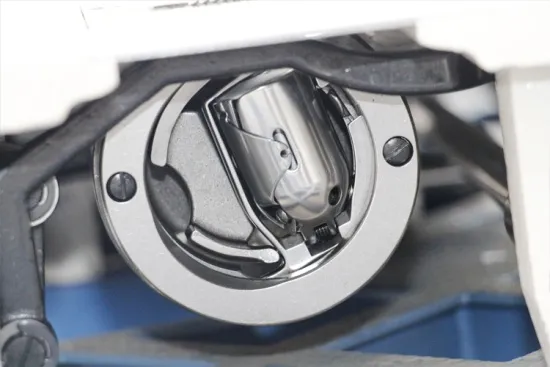Advanced Fully Automated Sewing Machines for Seamless and Efficient Stitching Solutions
The Rise of Fully Automatic Sewing Machines Revolutionizing the Textile Industry
In today's fast-paced world, where efficiency and precision are paramount, fully automatic sewing machines have emerged as a game-changer in the textile industry. These advanced machines combine cutting-edge technology with the art of sewing, drastically transforming how garments and textiles are produced. As we delve into the world of fully automatic sewing machines, we uncover the myriad advantages they offer, the innovations they bring, and their implications for the future of fashion and textiles.
The Evolution of Sewing Technology
Sewing machines have come a long way since their inception in the 19th century. Initially, these machines operated manually, requiring significant skill and effort from the operator. The introduction of electric sewing machines in the mid-20th century marked a significant advancement, enabling faster and more consistent stitching. However, the true leap forward came with the development of fully automatic sewing machines, which are equipped with computerized systems that can perform complex tasks with minimal human intervention.
Features of Fully Automatic Sewing Machines
Fully automatic sewing machines boast a range of features that enhance productivity and accuracy. These machines can automatically thread the needle, cut the thread, and even change stitches based on the parameters set by the user. Many models come with touch screens that allow operators to select different sewing patterns and adjust settings with ease. Additionally, some machines are equipped with sensors that detect fabric thickness, adjusting tension settings in real-time to ensure a perfect stitch every time.
One of the most significant benefits of fully automatic sewing machines is their ability to execute intricate designs and patterns that would be nearly impossible to achieve manually. With the advent of embroidery attachments and software integration, these machines can create detailed embellishments, turning simple fabric into works of art. This feature is especially beneficial for fashion designers and manufacturers who seek to produce high-quality items in a competitive market.
Impacts on the Textile Industry
fully automatic sewing machine

The introduction of fully automatic sewing machines has had profound implications for the textile industry. First and foremost, these machines greatly increase production speed. In an era where consumers demand fast fashion, the ability to produce garments quickly without sacrificing quality is a crucial advantage. Manufacturers can respond more swiftly to changing trends and consumer preferences, ensuring they stay relevant in a rapidly evolving market.
Another significant benefit is the reduction in labor costs. With automation handling many of the routine tasks, companies can streamline their operations and allocate human resources to more skilled positions that require creativity and critical thinking. This shift not only enhances efficiency but also creates opportunities for workers to engage in more meaningful aspects of the manufacturing process.
Moreover, the precision offered by fully automatic sewing machines reduces material waste. With accurate measurements and stitching, the waste generated during the cutting and sewing process is minimized, contributing to a more sustainable production model. In a time when eco-consciousness is at the forefront of consumer concerns, the ability to produce with minimal waste is increasingly valuable.
Future Trends in Sewing Technology
As technology continues to advance, the future of fully automatic sewing machines looks promising. Innovations such as artificial intelligence and machine learning are likely to further enhance the capabilities of these machines. For example, future models may be able to learn from past projects, adjusting their settings for optimal performance based on previous outcomes. This would not only improve efficiency but also lead to a new standard of quality in the textile industry.
Additionally, as more consumers become interested in personalized clothing, the demand for versatile sewing machines that can adapt to various styles and preferences is likely to rise. Fully automatic sewing machines will play a key role in meeting this demand, enabling both manufacturers and hobbyists to explore new creative avenues.
Conclusion
In conclusion, fully automatic sewing machines represent a significant advancement in textile manufacturing, combining technology with craftsmanship to produce high-quality garments efficiently and sustainably. As the industry continues to evolve, these machines will undoubtedly play a pivotal role in shaping the future of fashion and textiles, paving the way for greater innovation, efficiency, and creativity in the world of sewing.
-
Boost Production Efficiency with a Pattern Sewing MachineNewsAug.29,2025
-
Industrial Excellence with the Best Heavy Duty Sewing MachineNewsAug.29,2025
-
Precision and Power with the Best Pattern Sewing MachineNewsAug.29,2025
-
Reliable Bulk Packaging Starts With the Right FIBC Sewing MachineNewsAug.29,2025
-
Advanced Packaging Solutions: Elevate Productivity with Jumbo Bag Sewing Machine and Industrial Stitching EquipmentNewsAug.29,2025
-
High-Performance Solutions for Bulk Packaging: FIBC Sewing Machine and MoreNewsAug.29,2025
-
Maximize Efficiency with an Industrial Cylinder Arm Sewing MachineNewsAug.28,2025


























